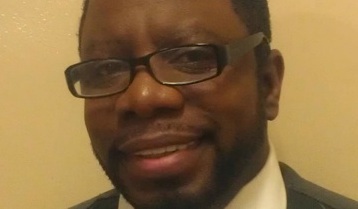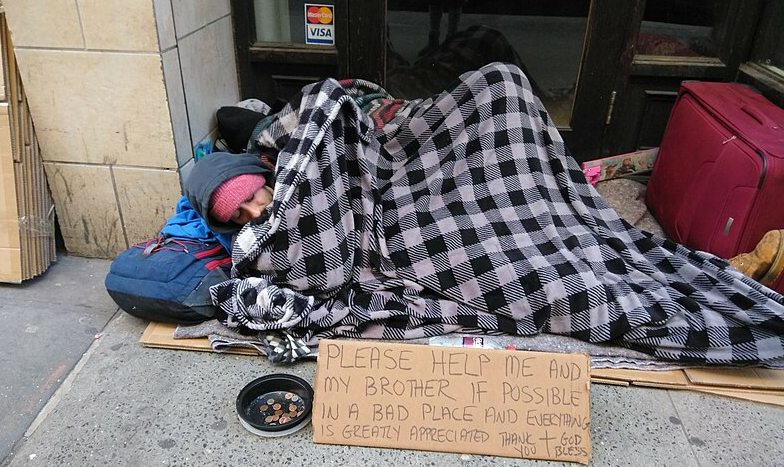Kevin Lambright
Kevin Lambright believes that by purposefully leveraging purchasing power African American residents of Co-Op City can transform the huge multi-housing complex into a new Wall Street similar to the iconic Greenwood which was infamously destroyed during a racist massacre in 1921.
“We have buying power that we don’t use,” Lambert, who’s lived in Co-Op City for 18 years and was recently elected president of the African American Association, says, in an interview with The Black Star News. “We can talk about it or we can start taking steps and doing something about it.”
Lambright is a man of action.
He wants African Americans, who make up about 65% of Co-Op City’s 65,000 residents to be more in control of the economics of the area and the governing of the complex. The median income in Co-Op City is over $50,000, according to census figures. “This could be the next Wall Street,” Lambright says.
Black Wall Street, a gold-standard of achievement, was the former Greenwood section of Tulsa, Oklahoma, before it was burned down during the attack by the White population and political establishment in 1921. As many as 300 or more African Americans were killed and 10,000 people left homeless. Marauding White vigilantes and the authorities attacked the prosperous Black community with guns, petrol bombs, and even WWI planes. Hundreds of homes and businesses were destroyed.
Greenwood had boasted a mile-long main street with Black-owned businesses: restaurants; doctor’s offices; law practices; grocery stores; funeral homes; and other establishments.
Lambright believes those tragic pages from history must inspire and motivate African Americans to rekindle the spirit of entrepreneurship and unity that allowed earlier generations to prosper in the face of even more formidable challenges.
He sees Co-Op City as being uniquely placed to recreate that era of success. “We have tremendous purchasing power. We need the mindset,” to properly redirect that financial clout, he says.
Before being elected president of Co-Op City’s African American Association Lambright had joined seven years earlier, as deputy treasurer.
Lambright praises the president before him, Francine Rivas-Jones, whom he credits for putting in place 12 programs, including: an after-school program; a health program; and program where members take children to school in cases where the parents leave home at 6 a.m. to get to work.
The African American Association already has more programs than any other community organization in Co-Op City, he says.
Lambright wants the organization to expand its membership. He wants it to utilize the professional skills of the current and new members and to realize their economic potential. “We have highly skilled and very intelligent people in our communities,” he says.
Co-Op City is located on the outer edges of the Bronx along the Hutchinson River. It comprises 15,372 units and includes 35 towers ranging from 24 floors to 33 floors. There’re also clusters of seven town-houses, including one-bedrooms and duplexes.
It’s often been called a “city-within-a-city” and would rank as number 16 in New York, right after Utica which has a population of about 62,000.
The apartments are huge, with three-bedroom units averaging 1,100 square feet. The complex was built in 1973 as part of the Mitchell-Lama middle-income subsidized housing program, co-sponsored in 1955 by Republican State Senator McNeil Mitchell and Democratic Assemblyman Alfred Lama.
Yet with the strong demographic presence of African Americans with considerable purchasing power, there are very few Black-owned businesses in Co-Op City, Lambright says.
Co-Op City owns three mini shopping malls that have about 40 businesses; yet only three of these are Black-owned, he says. Additionally, there are three large malls right outside Co-Op and there’s not a single African American-owned business in these malls, Lambright says.
He contrasts this condition with other New York City neighborhoods.
“You think I could go to Chinatown and open up a business? You think I could go to Little Italy and open up a business?” he says. “Every nationality can come here and open a business and be successful and we support it.”
“The demographics –the population should dictate the businesses here,” Lambright says.
Lambright sat for an interview on a recent Saturday morning in the offices of the African American Association. The walls are adorned with a photograph of President Obama and Malcolm X. Other pictures include one of scholar Dr. Leonard Jeffries posing with past association president Francis Rivas-Jones and other members.
Lambright is a believer in the philosophy of do-for-self.
“We have to start thinking and not let our minds rest,” he says, otherwise others who don’t rest and don’t have the interest of African Americans at heart “will control us.”
He says it’s important for children to know their past so that they are equipped to handle society’s challenges. “I have to stop looking for somebody to protect my kids. I have to teach my kids to protect and defend themselves,” he says. “I don’t want them to always be in defense mode.”
Lambright exudes passionate energy, determination, and optimism as he discusses the possibilities and his plans for the association.
“Given the total population of African Americans here what do you think the membership of the African American Association should be?” Lambright asks his visitor, before revealing that it’s only about 200.
Lambright says his first goal is to drive up the membership by offering practical incentives. More members means greater purchasing power and with it the ability to negotiate better deals with vendors and service providers.
Lambright recently struck an agreement with a company called www.vehicleadvantage.com allowing the African American Association’s members to purchase vehicles –new or used– for hundreds of dollars less than what they’d pay if bought from a regular car dealership.
Lambright plans to strike deals with other companies to get other products and services at discounted rates for the association’s members. “We can just talk about it, or we can do something,” Lambright says. “I plan to have about 1,000 members by the end of 2016.”
Lambright also plans a state of the art website for the association which currently relies on a Facebook page. The association will also continue outreach through flyers, for the benefit of its older members.
Lambright also wants the residents to be more proactive and to pay attention to the management of Co-Op City.
Co-Op City has a 15-member elected board that’s supposed to oversee the management company. “But we had a situation where the tail was wagging the dog,” Lambright says.
About 17 years ago Co-Op City had a surplus of $60 million, which was generated by the monthly commercial and residential maintenance fees paid by all the unit owners — the monthly revenue is about $13 million today.
Yet Co-Op City is in debt to the tune of about $480 million, Lambright says. How this situation developed over the years will be the focus of a future Black Star News article.
However, the new Board chairman of River Bay the in-house company that oversees outside management companies hired for Co-Op City, Cleve Taylor, has already done an excellent job in reducing the debt, Lambright says. Taylor is a retired firefighter and accountant who also owns his own construction business. He’s been at the helm of River Bay for less than a year and current bills are paid up for the first time in years, Lambright says.
Lambright wants the African American Association’s members to all attend meetings so that they can keep on top of the latest issues involving management and also take their own destiny into their hands.
“There is strength in unity and numbers,” he says.












